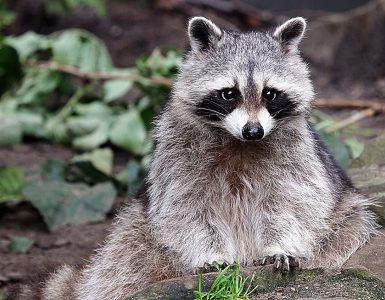by A’liya Spinner
The Lab-Grown Cornucopia
Rows and rows of produce sprawled before her, organized into colorful bins and groupings with identifying signs staked to the backs of each, proclaiming health benefits and drawing the eye. Elin passed her cart past the first few products, which were only non-nutritious novelties like sweet tasting, blue peppers and salty, orange grapes, the sort that her children loved, but that she didn’t understand the appeal of. Having grown up on only natural variants of household foods, the “new” and novel sorts seemed just a little too artificial to comfortably eat.
Upon reaching the greener, more familiar sections, however, she slowed and began to browse with more intention. She noted with some disappointment that the strawberry bins were empty; a printed sign pinned to the backboard apologized for the inconvenience and cited a recent laboratory mishap with IKR proteins on the latest, “even better” batch of strawberries to come out of the Midwestern greenhouses and vast fields where most new-age crops were grown.
As if to apologize for the lack of strawberries, the grocer had marked down the next few bins of produce. Elin gladly began to add a pair of oranges and a few ears of corn to her cart; even with the sale, fresh fruits and vegetables were cheaper today than they’d ever been. With the revolution of the farming industry— particularly the crops of the industry— water was barely even a concern, and nutrient-poor soil now grew as well as any other. Even farmland that had been so poisoned by pesticides and disrupted by tilling could suddenly be used again. After all, the plants of today were resistant to every form of pesticide one could imagine, fashioned their own nutrients out of what Elin could only assume was thin air, and grew healthy with little oversight. She idly wondered what the environmental toll of the corn in her hand had been, as opposed to natural, nutrient-greedy corn like she’d eaten as a kid. No longer were the most passionate eco-warriors against the consumption of meat; now the fight was against the few people left who hadn’t converted to engineered agriculture, choosing instead to continue supporting the archaic ways of domestication and crop dusting. Elin had not been the earliest believer, but now she saw no reason not to eat the engineered foods. They were cheaper, they were better for the environment according to every source she’d seen, and they required less labor. What wasn’t to love?
Thinking briefly of the old debates over “real”, wild-raised meat— which still existed but now in much smaller quantities and far beyond her preferred price range— Elin pulled her cart over to the next aisle. A refrigerated bin of lab-grown, certified-no-animals-were-harmed meat sat next to a display of neatly packaged plant patties that had been engineered with “proteins that tasted indistinguishable” from those found in poultry. Both brands, of course, were made by the same company, hoping to profit off of both those who were nostalgic for their carnivorous days or who were morally opposed to even the implication of an animal on their plate. Elin remembered when lab-grown meat was new and hotly debated, made with cell cultures harmlessly harvested from animals and grown with special molecules derived from engineered plants. Now it was as standard in groceries and their meals as any other formerly exciting innovation. That, of course, was alright with Elin. No one would ever say she wasn’t one to adapt to the times, or to shun a good discount.
There were other places in the store to visit— like the pharmaceutical aisle, where medicines made with gene-edited plants lined the shelves, or the furniture section, with barstools and bed frames made from trees whose bark was stronger on a molecular level— so she didn’t linger much longer with the fruits and vegetables. They were different from those she’d been raised on, but somehow they were also just the same. Corn still tasted like corn, even if it was fortified against climate change and insects and weeds. There was still meat on her table, still delicious meals that could be made with the engineered ingredients. Even if a handful of things had been lost in the process, she couldn’t help but feel as though everything had changed for the better— after all, food was food, wasn’t it? Elin put a package of lab-cultivated hamburger meat in her cart and continued on her way.
Modifying Nature
The use of genetic engineering to optimize (or even resurrect) people or animals, though often presented in overly simplistic terms, is a critical element in many popular film and book franchises. Cult classics like Jurassic Park and Gattaca have cemented in our cultural mind the vision of near-future dystopias and mad scientists tampering with nature, a cautionary tale of what could happen when geneticists go too far. But genetic engineering is already taking place on a mass, commercial scale. It’s just not being used to create superhumans or dinosaurs— instead, we’re redefining the limits of everyday agriculture.
Plants that have undergone some sort of genetic editing are usually called “GMOs”, or Genetically Modified Organisms. This term is also applied to microorganisms (such as bacteria modified for use in medicine), animals, or fungi, but we most often hear it when shopping for groceries, and it is with plants that the creation of GMOs is often most heavily debated. Unlike domestication and selective breeding, which amplifies existing genes through generations of careful curation, genetically modified plants have specific traits introduced to them, an artificial but much faster way of creating the desired result.
How is it Done?
Currently, genetically modified plants are created by inserting new segments of DNA into a cell using one of two common methods: exposure to bacterium carrying the desired genetic information, or bombardment by particles coated with the new DNA. This modified cell is then grown into a tissue culture from which a healthy plant can be obtained; the seeds of that plant will inherit the modifications, and a new lineage is created. While artificial, these processes of modification are not inherently unnatural— for example, modern sweet potatoes contain genetic material transferred from Agrobacterium thousands of years ago. It is also worth noting that the average plant cell contains somewhere around 30,000 genes, and the modern process of genetic modification only adds between one and ten. So while the plants are being changed in some way inside of a laboratory, their fundamental genetic makeup is not being altered, destroyed, or rewritten.
So how might our methods of modifying plants change in the future? With fear of GMOs containing foreign and possibly dangerous DNA rampant in some health communities, one new way is already being implemented: the process of “organic” gene editing. Unlike standard methods of changing an organism’s genome, the so-called organic process does not introduce any different genetic material to the cell. Rather, it uses editing techniques such as CRISPR to slightly modify preexisting genes. This “tweaking” of the available material without introducing foreign DNA into an organism more closely mimics the process of selective breeding, but is significantly faster and much more targeted, eliminating the need for generations of trial and error in order to produce the desired result. Many, including the European Food Safety Authority, believe that this method requires fewer safety assessments, and will allow us to create less controversial crops that are still better suited to meet our nutritional and environmental needs, if not as versatile as their “non-organic” relatives.
Why is it Done?
Growth Modified Organisms are relatively common, both in labs and in our grocery stores. But while engineering plants in a lab to study their properties seems reasonable, why do we eat the results, too? With all of the negative press and civil unease surrounding GMOs, what is the purpose for making, selling, and consuming them?
Currently, consumption of genetically engineered fruits and vegetables is largely a byproduct, and not the intention. This is because GMOs are mostly used to make agriculture easier and more efficient for modern farmers. Plants modified with a trait that’s unappealing to common pests, for example, requires less pesticides to keep healthy, reducing cost and the amount of pesticides that inevitably end up in the environment or in our bodies. In a similar vein, many GMO crops are herbicide resistant, so that weeds can be controlled without constant tilling of the soil, a process that causes soil erosion and produces carbon dioxide. Using gene editing to make plants virus-resistant is also common among farmers looking to keep more sustainable and safer crops. Finally, while agricultural efficiency has little effect on the average person other than perhaps a cheaper price tag, GMOs are nowadays often used to create medicines that safely replace components formerly extracted from other, non-modified organisms.
The Changing World
If GMOs are only for the benefit of farmers and pharmaceutical companies— and therefore ultimately limited in potential— the fuss about their usage may seem like an ultimately moot point. But to many scientists and opportunists, this current limitation is exactly why we should continue to invest in the creation of growth modified organisms, even despite the ongoing controversy on their use and legality. With innovation underway, these gene-edited crops won’t remain simply a farmer-friendly alternative to pesticides and soil-tilling for long. Rather, they will soon be better for the environment, for sustainability, and, hopefully, for you.
One such creative prospect is currently being researched in Iceland, where scientists are devising a theory that will allow them to derive meat proteins from genetically engineered barley. The hope is to take “growth-factor” proteins from these plants and then cultivate them in lab-grown meat using stem cells gathered from living animals, a process that doesn’t permanently harm or kill the animals nor require heavy reliance on living animals once begun, already a step up from some current lab-grown meat start-ups. Anna Runarsdottir, director of the ORF Genetics company behind the research, cited the nutrient needs of the rising global population as an important motivation behind her team’s work. And regardless of moral opinion on the consumption of meat, it is undeniable that mass production of livestock can lead to environmental distress and a loss of resources (although animal husbandry has its share of positives, as well.) Growth modified barley plants aiding in the cultivation of lab-grown meat makes protein sources more readily available to those with few financial or natural resources, and reduces the need for unsustainable “mega-farming” of animals to meet our dietary needs.
Furthering the idea of making healthier food more available, especially to those in developing countries or who have very limited options for their diet, many visionaries want to make nutritional improvements to the crops that we eat daily. This process, known as biofortification, is not yet common, but preliminary experiments show promising results. It involves heightening the production of micronutrients— necessary substances such as vitamins, iron, and zinc— already found in plants, or adding genes that cause their production or accumulation on a molecular level. GMO crops such as these increase nutrient consumption in populations that are traditionally and chronically not receiving the proper span of nutrients from their calories.
Lastly, and of everything perhaps the most realistically, GMOs are intended to be more sustainable. They are more resilient than modern crops, requiring less water and pesticides and resisting the stresses of climate change. Stable crops support farmers and communities by guaranteeing successful yields, and the lower levels of maintenance required to keep them growing also preserves the nutrients and integrity of the soil, keeping it healthy for future planting and preventing erosion of farmland. In a world threatened by increasingly unpredictable weather, temperature, and natural disasters, a food source that requires less resources, provides more valuable nutrition upon consumption, and can feed a growing population may be a life-saving innovation worth supporting.
Proceeding with Caution
Those familiar with GMOs may know that there is fierce debate about the safety of creating and consuming GMOs, and may therefore be hesitant about the idea of integrating these gene-edited plants into every aspect of our agricultural system. But while nervousness around organisms modified in a lab is only natural, these fears are also, in the eyes of science, almost all completely unfounded. For example, a major source of fear is that GMOs contain many more allergens than organic foods, because allergenic proteins can hypothetically be transferred into the genomes of previously “safe” plants. However, all GMOs are rigorously tested for allergens before being cleared for public consumption, and all genes are confirmed to produce only safe, non-allergenic products. Even concerns supposedly supported by scientific studies, like GMOs being linked to tumors, cancer, autism, and gluten disorders, have all been disproven, either as being improper science or blatant misinterpretations of the data presented.
Fringe theories notwithstanding, the lack of understanding of the process of GMO creation and what “genetic modification” means is most likely the leading cause of public fear (as well the funding of misinformation by organic companies who stand to profit from distrust of GMOs.) Therefore, the best way forward for growth modified organisms and their supporters is to better educate everyday people about the safety of these gene-edited crops, especially as our methods of making and implementing them evolve to become easier and more widespread.





